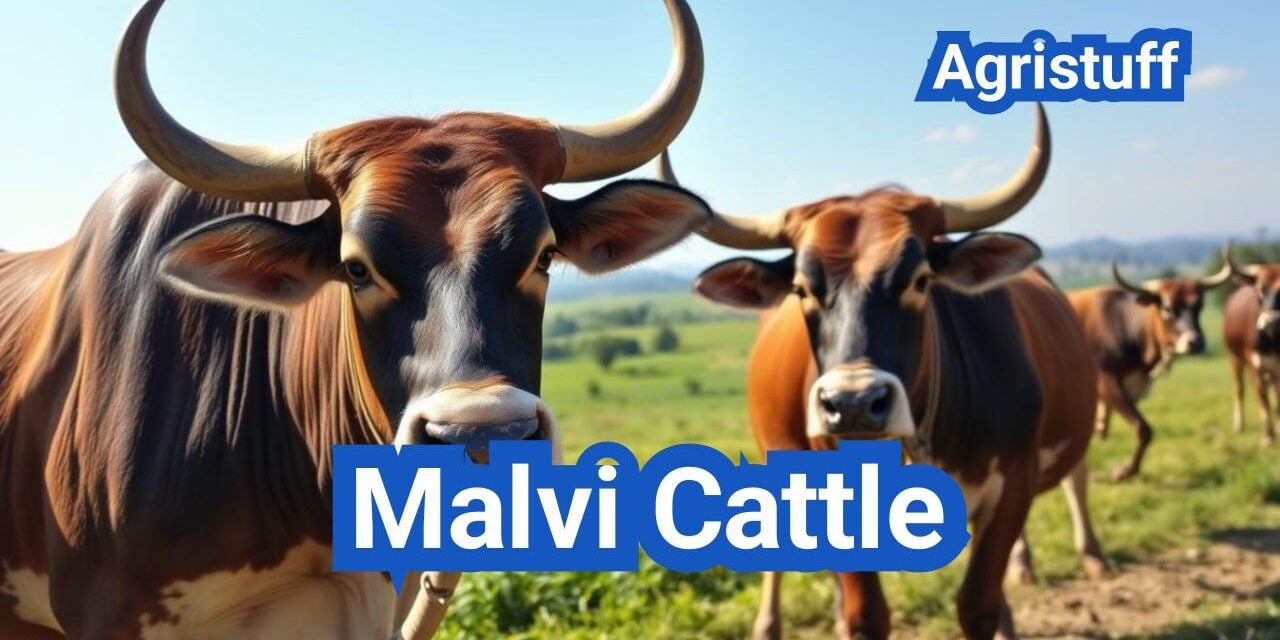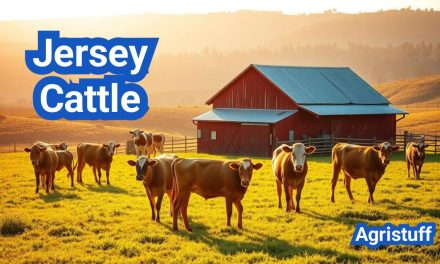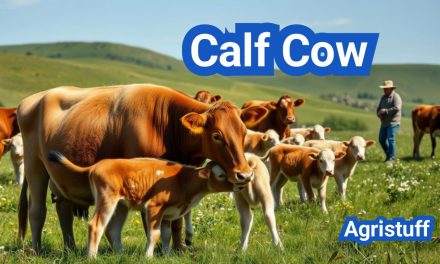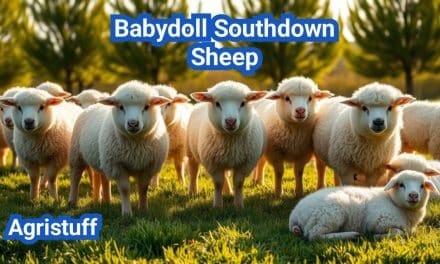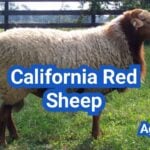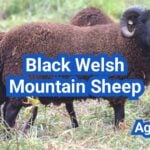The Malvi breed, also known as Manthani or Mahadeopuri, is an Indian zebu cattle breed originating from the Malwa plateau in western Madhya Pradesh.
This indigenous breed is renowned for its draught capabilities and is an essential part of the agricultural heritage in central India.
The history and origin of this breed are deeply rooted in the region, with its characteristics making it a valuable genetic resource.
Key Takeaways
- Malvi breed originates from the Malwa plateau in western Madhya Pradesh.
- It is known for its draught capabilities.
- The breed is an essential part of agricultural heritage.
- Malvi cattle have low milk yield.
- The breed is recognized as a valuable genetic resource.
The Significance of Malvi Cattle in Indigenous Breeds
With their rich history and distinctive characteristics, Malvi cattle represent a crucial component of indigenous cattle breeds. These cattle are not only significant for their agricultural productivity but also for their cultural and economic importance in their native regions.
Overview of Malvi as a Zebu Breed
Malvi cattle are classified as a zebu breed, known for their heat tolerance and drought resistance. This classification is significant as zebu cattle are well adapted to the hot climates of their native regions. Their ability to thrive in challenging environmental conditions makes them invaluable for local farmers.
The zebu characteristics of Malvi cattle include a distinctive hump on their shoulders and a robust physiology that enables them to withstand high temperatures and poor nutritional conditions. These traits are essential for their survival and productivity in regions with harsh climates.
Economic and Cultural Importance
The economic importance of Malvi cattle lies in their role in agriculture and dairy production. They are used for draught purposes, providing power for plowing fields and transporting goods. Additionally, their milk is consumed locally, contributing to the nutritional well-being of rural communities.
Culturally, Malvi cattle hold a revered position in local traditions and rituals. They are often associated with agricultural festivals and are considered a symbol of prosperity. The breed’s resilience and productivity make it a vital component of the local culture and economy.
The Rich History of Malvi Cattle

The Malvi cattle breed has a storied past that spans centuries, deeply intertwined with the agricultural heritage of the Malwa region. This breed has been a cornerstone of traditional farming practices, providing not only labor but also contributing to the local economy through milk and meat production.
Historical Development Through Centuries
Malvi cattle have a long history that dates back to the medieval period, with their origins closely tied to the Malwa region of Madhya Pradesh, India. The breed developed over centuries through selective breeding practices aimed at enhancing its strength, endurance, and milk production capabilities. The historical development of Malvi cattle is a testament to the ingenuity of local farmers who sought to create a breed that could thrive in the challenging climatic conditions of central India.
As noted by agricultural historians, “The development of cattle breeds in India has been influenced by geographical, cultural, and economic factors.”
This is evident in the case of Malvi cattle, where the breed’s characteristics have been shaped by the needs of local agriculture and the environmental conditions of the Malwa region.
Role in Traditional Indian Agriculture
Malvi cattle have played a crucial role in traditional Indian agriculture, serving as draught animals and providing milk for local consumption. Their strength and endurance make them ideal for plowing fields and other agricultural tasks. Additionally, their milk is used to produce dairy products such as ghee and butter, which are integral to Indian cuisine.
| Use | Description |
|---|---|
| Draught | Used for plowing fields and other agricultural tasks |
| Milk Production | Milk is used for local consumption and dairy products |
| Manure | Used as fertilizer for fields |
Historical Distribution Patterns
Historically, Malvi cattle were primarily found in the Malwa region of Madhya Pradesh. However, over time, their distribution has expanded to other parts of India, including regions with similar climatic conditions.
The breed’s adaptability and hardiness have contributed to its spread beyond its native region. Today, Malvi cattle can be found in various states across India, where they continue to play a vital role in local agriculture.
Origin and Native Regions
The Malwa region of Madhya Pradesh is the birthplace of Malvi cattle. This region has provided the ideal environment for the breed to develop its unique characteristics over centuries.
Geographical Origins in Madhya Pradesh
Malvi cattle originated in the Malwa region, which is known for its rich agricultural land and favorable climate. The geographical characteristics of this area have played a significant role in shaping the breed.
Key Features of Malwa Region:
- Fertile soil suitable for agriculture
- A climate that supports the growth of various crops
- Adequate water resources
Development in the Malwa Region
The development of Malvi cattle in the Malwa region has been influenced by local breeding practices and the region’s agricultural needs. Over time, the breed has become well-suited to the local environment.
Characteristics Developed:
- Resistance to local diseases
- Adaptability to the regional climate
- Strength for draught purposes
Spread to Other Parts of India
From the Malwa region, Malvi cattle have spread to other parts of India, where they have been valued for their strength and milk production capabilities.
| Region | Characteristics | Usage |
|---|---|---|
| Madhya Pradesh | High milk yield, strong draught capability | Agriculture, dairy |
| Rajasthan | Adaptability to arid conditions | Draught, dairy |
| Gujarat | Good health, high fertility | Agriculture, dairy farming |
As shown in the table, Malvi cattle have adapted to various regions and are used for multiple purposes.
The spread of Malvi cattle to different regions has contributed to their popularity and utility in Indian agriculture.
Physical Characteristics of Malvi Cattle

Malvi cattle are renowned for their distinct physical attributes that set them apart from other breeds. Their robust build and striking appearance make them a valuable asset in agricultural settings.
Body Structure and Size
The Malvi breed is characterized by its medium to large size, with bulls typically being larger than cows. They have a compact, muscular body with a deep chest and well-sprung ribs, indicating good health and strength.
- Height and Weight: Males can weigh between 450-600 kg, while females generally weigh between 350-500 kg.
- Body Proportions: They have a proportionate body with a straight or slightly convex profile.
Coat Colors and Distinctive Features
Malvi cattle are known for their varied coat colors, which can range from white to gray or even reddish hues. Some distinctive features include their white or light-colored extremities and a white switch on the tail.
- The coat is typically short and sleek, adapting well to the hot climates they are often found in.
- Ears are of medium size, and the horns are generally short to medium in length, curving outward and upward.
Sexual Dimorphism in Bulls and Cows
Sexual dimorphism is evident in Malvi cattle, with males generally being more muscular and having more pronounced features than females.
- Bulls: Have a more developed dewlap and a thicker neck compared to cows.
- Cows: Are generally more refined, with a less pronounced muscular structure.
Understanding these physical characteristics is essential for identifying authentic Malvi cattle and appreciating their breed-specific traits.
Adaptability and Environmental Tolerance
One of the standout features of Malvi cattle is their ability to thrive in diverse settings. This adaptability is crucial for farmers who operate in varying environmental conditions.
The adaptability of Malvi cattle is attributed to their robust physiology and genetic makeup. They have been bred over centuries to withstand the harsh conditions of their native regions.
Heat and Drought Resistance Mechanisms
Malvi cattle are renowned for their heat resistance, which is facilitated by their short, fine coats and the ability to regulate their body temperature effectively. Their drought resistance is equally impressive, allowing them to survive with minimal water intake.
| Characteristics | Description | Benefits |
|---|---|---|
| Short, fine coat | Reduces heat absorption | Enhanced heat tolerance |
| Efficient body temperature regulation | Maintains homeostasis in high temperatures | Improved overall health |
| Water conservation abilities | Minimizes water loss | Survival during drought conditions |
Disease Resistance Capabilities
Malvi cattle also exhibit a significant level of disease resistance. Their robust immune system helps them fight off common cattle diseases, reducing the need for veterinary interventions.
Adaptation to Various Terrains
The breed’s ability to adapt to various terrains is another key advantage. From the rugged landscapes of their native Madhya Pradesh to other regions, Malvi cattle demonstrate versatility in different geographical settings.
In conclusion, the adaptability and environmental tolerance of Malvi cattle make them an excellent choice for farmers across diverse environmental conditions.
How to Select Quality Malvi Cattle for Purchase

The process of selecting Malvi cattle requires careful consideration of several factors, including breed authenticity and health status. When purchasing Malvi cattle, it is essential to be thorough in your evaluation to ensure you are getting quality animals.
Identifying Authentic Breed Characteristics
To identify authentic Malvi breed characteristics, look for the typical features of the breed. Malvi cattle are known for their distinctive white or gray coat and are generally compact and muscular. They have a medium-sized head with a broad forehead and a pair of medium-sized horns that are typically lyre-shaped.
Ensuring that the cattle conform to these breed standards is crucial. Any significant deviation could indicate that the animal is not a pure Malvi breed.
Health Indicators to Check
Checking the health indicators of Malvi cattle is vital. Look for animals with clear eyes, a healthy coat, and good body condition. The cattle should be free from any visible signs of illness or injury, such as lameness or labored breathing. It’s also important to check for any signs of parasitic infestation.
- Check the overall body condition and muscle tone.
- Examine the eyes, nose, and mouth for any signs of infection.
- Inspect the coat for any unusual shedding or skin conditions.
Age Assessment Techniques
Assessing the age of Malvi cattle can be done by examining their teeth. Cattle have different numbers and types of teeth at various ages. For instance, younger cattle will have more milk teeth, which are gradually replaced by permanent teeth as they mature.
Another method is to check the condition and development of the horns and overall body size. Older animals tend to have more developed horns and a larger body size.
Price Considerations and Market Factors
The price of Malvi cattle can vary based on several factors, including age, health, breed purity, and market demand. It’s essential to research the current market prices and understand the factors that influence them.
When negotiating the price, consider the quality and potential of the cattle for your specific needs, whether it’s for dairy, breeding, or draught purposes.
| Factor | Influence on Price |
|---|---|
| Age | Younger cattle may be cheaper but consider their potential for growth and productivity. |
| Breed Purity | Purebred Malvi cattle command a higher price due to their desirable breed characteristics. |
| Health Status | Cattle with better health indicators are more valuable. |
Malvi Cattle Breeding: Step-by-Step Guide

The process of breeding Malvi cattle involves several critical steps, from setting up a breeding program to calving management. Breeding Malvi cattle requires careful planning and management to ensure the production of healthy, high-quality animals.
Setting Up a Breeding Program
Establishing a successful Malvi cattle breeding program begins with defining clear objectives, such as improving milk production or enhancing draught capabilities. It’s essential to understand the genetic traits of the cattle and the local market demands.
Selection of Breeding Stock
The selection of superior breeding stock is crucial for the success of any breeding program. Factors to consider include the genetic quality, health status, and productivity of the animals. Choosing animals with desirable traits is vital for achieving the breeding program’s objectives.
Mating Strategies and Timing
Effective mating strategies are critical for successful breeding. This includes deciding on the mating method (natural or artificial insemination), the timing of mating based on the reproductive cycle of the females, and ensuring the health and fertility of the breeding bulls.
Calving Management
Proper calving management is essential to minimize complications during birth and ensure the health of both the cow and the newborn calf. This involves monitoring pregnant cows closely, providing appropriate nutrition, and having a plan in place for any potential complications.
| Breeding Program Aspect | Description | Importance |
|---|---|---|
| Setting Up a Breeding Program | Defining objectives and understanding genetic traits | High |
| Selection of Breeding Stock | Choosing animals with desirable genetic traits and health | High |
| Mating Strategies and Timing | Deciding on mating methods and timing based on reproductive cycles | Medium |
| Calving Management | Monitoring pregnant cows and managing calving to minimize complications | High |
Proper Care and Management of Malvi Cattle

To ensure the well-being and productivity of Malvi Cattle, proper care and management practices are crucial. This involves several key aspects that farmers and cattle owners must consider to maintain the health and efficiency of their cattle.
Housing Requirements and Setup
Malvi Cattle require comfortable and clean living conditions. The housing setup should provide adequate shelter from extreme weather conditions, such as intense sunlight, heavy rainfall, and cold temperatures. Adequate ventilation is essential to prevent the buildup of ammonia from manure and to reduce the risk of respiratory diseases.
The housing area should be designed to accommodate the cattle comfortably, with enough space for movement. Concrete flooring is recommended as it is easier to clean and maintain than earthen floors. Additionally, the housing should be secure to protect the cattle from predators and thieves.
Nutrition and Feeding Guidelines
Malvi Cattle are known for their ability to thrive on low-quality feed, but providing a balanced diet is crucial for optimal productivity. The diet should include a mix of roughage and concentrates. Roughage such as hay, straw, and silage should form the bulk of their diet, while concentrates like grains and protein meals are added based on the cattle’s nutritional needs.
It is also important to ensure that the cattle have access to clean drinking water at all times. Nutritional deficiencies can lead to health issues, so it’s vital to monitor the cattle’s diet and adjust as necessary.
Health Management Protocols
Regular health checks are vital for the early detection of diseases and parasites. A vaccination program should be implemented to protect against common diseases. Regular monitoring for internal parasites, such as worms, and external parasites, like ticks and flies, is also necessary.
Farmers should work closely with a veterinarian to develop a health management plan tailored to the specific needs of their Malvi Cattle. This plan should include regular check-ups, vaccinations, and parasite control measures.
Milk Production and Dairy Benefits

Malvi cattle are renowned for their contribution to dairy farming, offering a unique blend of milk production and quality. The breed’s milk production capabilities make it a valuable asset in the dairy industry.
Average Milk Yield Expectations
The average milk yield of Malvi cattle is relatively modest compared to specialized dairy breeds. However, they are known for their consistent production under proper management conditions.
Farmers can expect an average milk yield ranging from 600 to 1,000 liters per lactation period, which typically lasts around 240 to 300 days.
Nutritional Content and Quality
The milk produced by Malvi cattle is rich in nutritional content, with a good balance of fat, protein, and other essential nutrients.
It is particularly valued for its high butterfat content, making it ideal for producing ghee and other dairy products.
Improving Milk Production Techniques
Improving milk production in Malvi cattle involves a combination of better breeding practices, nutritional management, and health care.
- Selective breeding for higher milk yield
- Providing a balanced diet rich in nutrients
- Ensuring regular health check-ups and veterinary care
Traditional and Commercial Dairy Applications
Malvi cattle milk is used in both traditional and commercial dairy applications.
Traditionally, it is used for making ghee, butter, and other dairy products that are an integral part of Indian cuisine.
Commercially, it is sold as milk or used in dairy products, contributing to the local economy.
Malvi Cattle as Draught Animals
Malvi cattle have been utilized for centuries as draught animals due to their remarkable strength and endurance. Their ability to perform demanding tasks makes them invaluable in traditional farming and agricultural operations.
Training Methods for Work Performance
Effective training is crucial for Malvi cattle to achieve optimal work performance. Training methods typically involve gradual exposure to draught work, starting with light tasks and progressively increasing the load and complexity. Positive reinforcement techniques, such as providing rewards for desired behavior, are also employed to enhance their performance and compliance.
Agricultural Applications and Techniques
Malvi cattle are versatile draught animals used in various agricultural applications, including plowing fields, transporting goods, and operating traditional machinery. Their strength and endurance enable them to work for extended periods under challenging conditions. Farmers often use simple yet effective techniques, such as yoking, to harness their power efficiently.
Strength and Endurance Characteristics
The strength and endurance of Malvi cattle are among their most notable attributes. They possess a robust build and are capable of withstanding the rigors of demanding agricultural tasks. Their ability to work in harsh environments, such as high temperatures and rugged terrains, further underscores their value as draught animals.
Comparison with Other Draught Breeds
When compared to other draught breeds, Malvi cattle stand out due to their unique combination of strength, endurance, and adaptability. While breeds like the Kangayam and Hallikar are also renowned for their draught capabilities, Malvi cattle are particularly prized for their ability to thrive in diverse environmental conditions. This makes them an excellent choice for farmers operating in varied agricultural settings.
Malvi Cattle in the United States

The introduction of Malvi cattle to the United States marked a significant milestone in the country’s cattle breeding history. Malvi cattle, known for their heat tolerance and milk production capabilities, have been gaining attention from American farmers and breeders.
Introduction History and Timeline
The journey of Malvi cattle to the U.S. began several decades ago, with the first imports happening in the late 20th century. Initially, the breed was introduced for its draught capabilities, but over time, its potential for milk production became a significant focus.
By the early 2000s, Malvi cattle had started to gain popularity among dairy farmers in warmer climates due to their ability to thrive in heat-stress conditions.
Adaptation to American Conditions
Malvi cattle have shown a remarkable ability to adapt to the diverse climatic conditions across the United States. Their heat tolerance, inherited from their Indian origins, has been particularly beneficial in southern states.
Farmers have reported that with proper care and management, Malvi cattle can perform as well as, if not better than, some native breeds in terms of milk production and draught capacity.
Current Population and Distribution
While exact numbers are difficult to ascertain due to the lack of centralized registries, it’s estimated that there are several thousand Malvi cattle in the U.S. today. They are primarily found in states with warmer climates, such as Texas, Florida, and California.
| State | Estimated Malvi Cattle Population |
|---|---|
| Texas | 1,500 |
| Florida | 800 |
| California | 1,000 |
American Breeding Programs and Resources
Several breeding programs across the U.S. are now focused on improving the Malvi breed for American conditions. These programs aim to enhance milk production while retaining the breed’s heat tolerance and hardiness.
Organizations such as the American Malvi Cattle Association provide resources for breeders, including breeding stock, training, and management advice.
Comparing Malvi with Other Zebu Breeds

Malvi cattle, a prominent Zebu breed from India, offers unique characteristics that differentiate it from other breeds such as Brahman and Kankrej. This comparison is crucial for farmers and agricultural businesses looking to optimize their livestock for heat-tolerant farming systems.
Malvi vs. Brahman Cattle
Malvi and Brahman cattle are both known for their heat tolerance, but they have distinct differences in their physical characteristics and productivity. Brahman cattle are generally larger and have a more pronounced hump than Malvi cattle. While Brahman cattle are renowned for their rapid growth rate and high milk production potential, Malvi cattle are valued for their strength, endurance, and adaptability to harsh environments.
- Size and Structure: Brahman cattle are typically larger than Malvi cattle.
- Heat Tolerance: Both breeds exhibit high heat tolerance, but Malvi cattle are more adapted to the local Indian climate.
- Milk Production: Brahman cattle generally produce more milk than Malvi cattle.
Malvi vs. Kankrej Cattle
Kankrej cattle, another Zebu breed from India, share some similarities with Malvi cattle but also have notable differences. Kankrej cattle are known for their large size and powerful build, making them suitable for draught purposes. In contrast, Malvi cattle, while also used for draught, are relatively smaller.
- Draught Capability: Both breeds are used for draught, but Kankrej are considered more powerful.
- Adaptability: Malvi cattle are highly adaptable to different terrains and climates.
- Milk Yield: Kankrej cattle have a slightly higher milk yield compared to Malvi cattle.
Advantages in Heat-Tolerant Farming Systems
Malvi cattle offer several advantages in heat-tolerant farming systems due to their inherent ability to withstand high temperatures and humidity. Their robust constitution and disease resistance make them an ideal choice for farming in challenging environmental conditions.
“The adaptability of Malvi cattle to harsh climates and their resistance to diseases make them a valuable asset for farmers in regions with extreme weather conditions.”
Economic Comparison with Other Breeds
When comparing the economic viability of Malvi cattle with other Zebu breeds, factors such as feed cost, maintenance, and productivity need to be considered. Malvi cattle, while not the highest in milk production, offer a good balance between cost and output, making them economically viable for many farmers.
| Breed | Milk Yield (liters/day) | Draught Capability | Feed Cost |
|---|---|---|---|
| Malvi | 4-6 | High | Moderate |
| Brahman | 6-8 | Moderate | High |
| Kankrej | 5-7 | High | Moderate |
At The End of: Malvi Cattle
Malvi cattle represent a valuable indigenous breed with a rich history and significant cultural importance. Throughout this article, we have explored their origin, characteristics, breeding practices, and uses, highlighting their adaptability and environmental tolerance.
The Malvi breed plays a crucial role in traditional Indian agriculture, serving not only as a source of milk but also as draught animals. Their heat and drought resistance make them an ideal choice for farming in challenging environmental conditions.
In summary, the Malvi cattle summary underscores the need to preserve and promote this breed. Efforts to conserve Malvi cattle are essential for maintaining biodiversity and supporting local economies. As we conclude, it is clear that Malvi cattle are an integral part of India’s agricultural heritage, warranting continued support and recognition.
FAQ
What is the origin of Malvi Cattle?
Malvi Cattle originate from the Malwa region of Madhya Pradesh, India, and are known for their draught capabilities.
What are the characteristics of Malvi Cattle?
Malvi Cattle are characterized by their robust body structure, heat and drought resistance, and distinctive coat colors.
What is the significance of Malvi Cattle in Indian agriculture?
Malvi Cattle play a crucial role in traditional Indian agriculture, serving as draught animals and providing milk and dairy products.
How do Malvi Cattle adapt to environmental conditions?
Malvi Cattle have developed mechanisms to resist heat and drought, making them well-suited to the climatic conditions of their native region.
What are the milk production expectations from Malvi Cattle?
The average milk yield of Malvi Cattle is relatively moderate, but their milk is rich in nutritional content and quality.
How can one select quality Malvi Cattle for purchase?
To select quality Malvi Cattle, one should identify authentic breed characteristics, check health indicators, and assess the age of the animals.
What are the benefits of using Malvi Cattle as draught animals?
Malvi Cattle are known for their strength and endurance, making them suitable for agricultural applications and draught work.
How do Malvi Cattle compare with other zebu breeds?
Malvi Cattle have advantages in heat-tolerant farming systems and are economically viable compared to other breeds like Brahman and Kankrej.
What are the key considerations for breeding Malvi Cattle?
Breeding Malvi Cattle requires setting up a breeding program, selecting suitable breeding stock, and implementing effective mating strategies and calving management.
What are the housing and nutritional requirements for Malvi Cattle?
Malvi Cattle require proper housing and nutrition, including guidelines for feeding and health management protocols.
Are Malvi Cattle suitable for dairy farming?
Yes, Malvi Cattle can be used for dairy farming, and their milk is suitable for traditional and commercial dairy applications.
What is the conservation status of Malvi Cattle?
Malvi Cattle are considered a valuable genetic resource, and their conservation is important for preserving indigenous breeds.
Conclusion of: Malvi Cattle
Introduction: What Are Malvi Cattle?
Malvi Cattle are an indigenous Indian zebu breed originating on the Malwa plateau of central India. For readers in the U.S., Malvi Cattle matter because they represent a heat-tolerant, hardy draught type with modest milk output and strong adaptation to hot, semi-arid conditions—traits that interest ranchers and researchers coping with heat stress. Their classic white to grey coat and black points make Malvi Cattle visually distinctive and functionally resilient in tough environments. Dairy Knowledge Portal — Malvi breed profile
History and Origin of Malvi Cattle
Malvi Cattle take their name from the Malwa region and have been recognized in India’s official breed registers for decades. As part of India’s catalog of defined cattle breeds, Malvi Cattle are recorded by the national genetic resources authority, underscoring their cultural and agricultural importance. Historic development centered in Madhya Pradesh, where farmers selected Malvi Cattle for stamina, sound feet and legs, and dependable draught power across black-cotton soils. ICAR-NBAGR — Cattle breeds of India (Malvi listed)
Geographic Distribution and Breeding Tract
Malvi Cattle are concentrated across the Malwa plateau, notably in districts such as Ujjain, Dewas, Shajapur/Agar, Mandsaur, and neighboring areas of Madhya Pradesh. This distribution reflects the adaptation of Malvi Cattle to seasonal heat and periods of limited forage, where their ability to work and maintain condition has long been valued by smallholders. TNAU Agritech — Indian cattle breeds & tracts (includes Malvi)
Synonyms and Local Names
Farmers and extension documents often refer to Malvi Cattle by alternative names such as “Mahadeopuri” and “Manthani.” These synonyms reflect local dialects and history but point to the same distinctive draught breed; wherever you see these names, you are looking at the Malvi Cattle population selected from the Malwa heartland. NDDB Dairy Knowledge — Synonyms noted for Malvi
General Appearance and Type
Malvi Cattle are medium, compact zebu with a well-developed hump, tight sheath, and strong, level topline suited to pulling. Typical Malvi Cattle show white to light grey coats with darker shading on the hump and forequarters in males, and they carry lyre-shaped horns of moderate length. Their conformation emphasizes endurance and traction rather than high milk yield. Oklahoma State University — Breeds of Livestock: Malvi
Color, Horns, and Identifying Marks
Color in Malvi Cattle ranges from white to grey, with males commonly darker at the neck, shoulders, hump, and quarters. Horns in Malvi Cattle emerge outward and upward from the poll, typically around 20–25 cm, while the muzzle, eyelids, hooves, and tail switch often show black pigment—classic identifiers for Malvi Cattle in the field. NDDB profile — color & horn description
Milk Yield and Dairy Traits
Although primarily a work breed, Malvi Cattle provide useful household milk. Average lactation yield reported for Malvi Cattle is roughly around 900+ kg per lactation at about 4.3% fat, with a typical range reflecting on-farm management and feed. For small mixed farms, Malvi Cattle milk can supplement family nutrition while bulls and bullocks supply valuable traction. NDDB profile — average lactation yield & fat
Draught Power and Work Performance
Selected for generations to pull ploughs and carts, Malvi Cattle are renowned for surefooted movement and endurance. Historical FAO literature and Indian technical bulletins consistently describe Malvi Cattle as a powerful draught type whose cows are modest milkers, a trade-off common to draught breeds globally. FAO — Zebu Cattle of India & Pakistan (includes Malvi)
Body Measurements and Growth
Reports on Malvi Cattle describe a medium frame aligned with draught use; adult cows are typically smaller than bulls, and field studies from Madhya Pradesh have documented steady growth and soundness needed for farm traction. While exact weights vary by management, Malvi Cattle maintain a balanced build rather than extreme size, helping longevity under work. CABI abstract — Characteristics of Malvi cattle
Temperament and Handling
Practical accounts portray Malvi Cattle as tractable when properly handled, which aligns with their widespread use as bullocks on Indian farms. As with any working breed, early halter training, calm stockmanship, and consistent routines help Malvi Cattle develop into reliable, steady workers for field and cart tasks. OSU — Breed overview for Malvi
Breeding and Reproduction in Malvi Cattle
Long-term herd records from the Government Cattle Breeding Farm at Agar (Shajapur district, Madhya Pradesh) show systematic evaluation of Malvi Cattle fertility and efficiency. Studies examining period/season of first calving and inbreeding effects provide guidance for maintaining reproductive performance in Malvi Cattle herds over decades. Indian J. Vet. Sci. & Biotech. — Breeding efficiency study on Malvi cows
Health, Heat Tolerance, and Adaptation
As a Bos indicus type, Malvi Cattle carry adaptations to heat, solar radiation, and parasites that are valuable under hot, humid, or seasonally harsh conditions. Extension resources in the U.S. note that Bos indicus breeds and crosses regulate body temperature more effectively during heat stress, a trait that makes Malvi Cattle relevant in climate-adaptation discussions. University of Florida IFAS — Incorporating Bos indicus for heat tolerance
Feeding and Day-to-Day Management
Because Malvi Cattle are work-oriented, steady energy and mineral nutrition are essential—especially for bullocks in training and cows in early lactation. Good Dairy Husbandry Practices (housing, hygiene, biosecurity, and milking routines) apply to Malvi Cattle just as they do to specialized dairy breeds, improving welfare and productivity on small farms. NDDB — Handbook of Good Dairy Husbandry Practices (PDF)
Uses of Malvi Cattle on the Farm
Traditional farms rely on Malvi Cattle for ploughing black soils, carting produce, and powering rural transport. In mixed systems, Malvi Cattle cows support household milk needs while surplus males become dependable draught bullocks—an integrated work-plus-milk role that remains economically relevant where mechanization is partial. NDDB profile — Malvi as a draught type
Relevance of Malvi Cattle to U.S. Producers
While Malvi Cattle are not established in the U.S., their Bos indicus heritage aligns with American experience using Brahman-influenced cattle to manage heat and parasites. U.S. extension notes that Bos indicus genetics enhance thermotolerance and adaptability—lessons that inform breeding goals as more U.S. counties face heat stress. Importantly, importing Malvi Cattle or their germplasm to the U.S. is tightly regulated to prevent disease introduction, so interested parties must follow APHIS rules. USDA APHIS — Importing live cattle & germplasm (non-NA)
Regulatory Note for Germplasm and Disease Risk
Because India has endemic transboundary animal diseases, movement of live cattle and certain products is subject to restrictions. Anyone considering Malvi Cattle genetics must consult current U.S. rules for ruminant imports, disease status by region, and any temporary restrictions that APHIS posts for biosecurity. This protects U.S. herds while enabling lawful, science-based trade in the future. USDA APHIS — Foot-and-Mouth Disease overview
Conservation Status and Breed Recording
Conservation frameworks track indigenous breeds like Malvi Cattle through national and FAO databases. Although Malvi Cattle are locally abundant in their core tract, ongoing recording helps authorities monitor risk status and population trends, ensuring Malvi Cattle genetic diversity is safeguarded for future farming and research. FAO DAD-IS — Global breed database
Field Identification Tips
To identify Malvi Cattle in the field, look for a medium, compact zebu frame; a well-developed hump; white to grey coat with darker shading on adult males; lyre-shaped horns; and black points on muzzle and hooves. These markers, taken together, quickly separate Malvi Cattle from neighboring draught breeds. OSU — Visual traits summary for Malvi
Research and Documentation on Malvi Cattle
Peer-reviewed and technical reports on Malvi Cattle document conformation, reproductive efficiency, and decades of herd performance at government farms in Madhya Pradesh. Such datasets are invaluable for selection and conservation planning, providing baseline metrics to guide the future of Malvi Cattle breeding. Indian Journal of Animal Sciences — Malvi characteristics (record)
Best Practices When Working Malvi Cattle
For work animals, start Malvi Cattle with halter training and progressive load conditioning; combine balanced rations with hoof care, deworming strategy, and vaccination per regional guidelines. Even where mechanization is common, Malvi Cattle remain effective for small plots and short-haul transport when handled methodically. NDDB — Farmer health booklets & husbandry guides
Climate Adaptation Takeaways for the U.S.
As heat events become more frequent, U.S. producers look to traits embodied in Malvi Cattle—slicker coats, heat tolerance, and durability under forage stress—already leveraged via Brahman-influenced composites. Extension guidance suggests carefully managed Bos indicus influence can improve cow comfort, reproduction, and longevity in hot regions, a principle that Malvi Cattle illustrate well. Texas A&M — Bos indicus use & crossbreeding notes
Final Thought
Malvi Cattle are a durable, regionally adapted draught breed with practical milk output and standout heat tolerance—traits that resonate far beyond India. Whether you are conserving indigenous genetics, evaluating climate-ready traits, or studying work breeds for mixed systems, Malvi Cattle offer a compelling case study in resilience and function. NDDB — Malvi overview
Sources & References
- NDDB Dairy Knowledge Portal — Malvi (profile, milk data, traits)
- ICAR-NBAGR — Cattle Breeds of India (Malvi entry)
- FAO — Zebu Cattle of India & Pakistan (illustrative notes on Malvi)
- Indian J. Vet. Sci. & Biotech. — Breeding efficiency in Malvi cows (Agar)
- TNAU Agritech — Breeds & tracts (Malvi listed)
- UF/IFAS — Incorporating Brahman (Bos indicus) genetics for heat tolerance
- USDA APHIS — Importing live cattle & germplasm (outside NA)
- NDDB — Handbook of Good Dairy Husbandry Practices (PDF)

